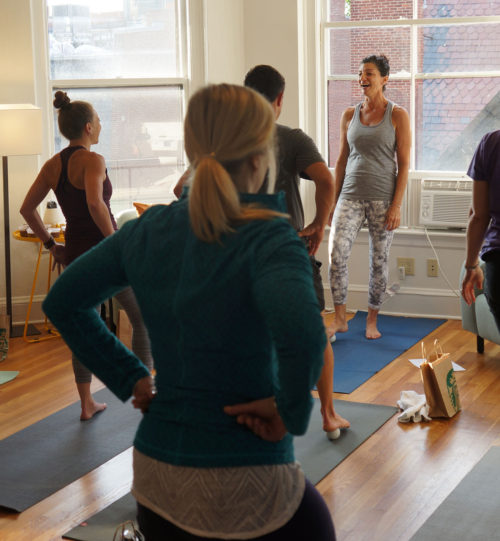
Every once in a while I go to a yoga class and the teacher starts out asking if anyone has any injuries. This sometimes leads to a few minutes of discussion as individual people share what’s going on with them. This can lead to an awkward moment for the rest of the class as they wait for class to begin and as they listen in to the conversation between the teacher and student.
While I’m sure the teacher is well-intentioned, I wonder if there is another approach to getting at the same information. Sometimes, teachers will have everyone start in Child’s Pose and they’ll ask anyone that has an injury to “wave a hand” so that way they can approach the student and discuss quietly while everyone else is taking their first pose and essentially, resting. Sometimes, teachers will come into the room before class starts and make a general announcement asking that if anyone has any injuries to speak to them privately before class starts.
My first question, if you’re reading this and you’re a teacher, how do you handle this? Do you ask your students about injuries or assume that if they have one, they’ll tell you before class? I can recall a class recently when a new student walked in and shared that she’d recently broken her arm but was cleared for yoga even though she was really unable to weight bear on that arm. As you can imagine, it was pretty challenging for her but as she had a lot of experience with yoga, she was able to customize the practice for her.
Things to consider:
- Students that have significant injuries or issues will most likely talk to you before class;
- Asking students once you’re in class can indeed lead to an awkward situation for the other students plus it really doesn’t give you as a teacher, a way to have a detailed conversation with the student. Asking students before class is a better option and then you’ll be able to get a full picture of what’s happening;
- Keep in mind that even if you get a diagnosis from the student, (“I have a herniated disc”) you’ll need to find out what functional limitations they have. In fact, this is almost more important to us as yoga teachers over the diagnosis itself because what we really want to find out is how limited is their movement. Also, not every yoga teacher will have the knowledge to understand the implications of certain diagnoses so it’s helpful to simply ask them what movements are they restricted in doing and what movements create pain.
Knowing how to discuss injuries with students depends on having a solid understanding of anatomy. This is one of the areas where there is so much variation from teacher to teacher and unfortunately, there’s a TON of variation in how anatomy is presented in the hundreds of 200-hour trainings in the industry. I’ve created a 10 module course called YOUR YOGA ANATOMY BLUEPRINT that will give you the fundamentals of anatomy and also dive into the application of anatomy in many scenarios, INCLUDING discussing injuries with your students.
I’m planning a big re-launch of this course, since I’ve recently added two new modules: one on myofascial release and one on effective cues. The re-launch will also include a number of free bonuses, making it worth more than the list price. This re-launch will be 10/29 and enrollment is only open for FIVE days. For now, just check out the course preview and read the reviews. See what other teachers thought of it:
Once you take a peek, I’ll contact you to see if you have questions.
So, what do you think? How do you approach questions about injuries and what’s your confidence level around knowing anatomy?
Thanks for reading!
